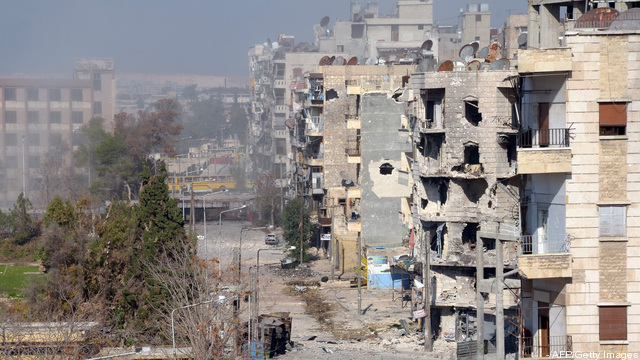Syria, Chemical Weapons And The Collapse of Deterrence
Posted on
 Since President Obama has declared Syrian use of chemical weapons a “red line” that line should mean something when it has been crossed. And the president better have a clear view of what his options are to change the situation when the “red line” is crossed.
Since President Obama has declared Syrian use of chemical weapons a “red line” that line should mean something when it has been crossed. And the president better have a clear view of what his options are to change the situation when the “red line” is crossed.
But do we?
Having spent many years looking at chemical weapons in the context of the East-West military confrontation, I really doubt whether US and NATO officials possess many good options.
Notably, we have largely stopped planning to counter chemical weapons, and our exercises to deal with chemical weapons are an echo of years past. When the allies and US came to consider intervention in 1991, preparation for chemical weapons use by Iraq was a key consideration. But since that time counter IEDs have grown more prominent than the need to counter chemical weapons.
So how would we deploy troops in a situation in which chemical weapons are used?
If the “red line” is simply ignored, which is highly likely, the impact on the region is immediate and significant. Without restoring deterrence, for that is what would have to be done to deal with the Syrians and chemical use, Iran will be emboldened.
In the Middle East, with the Benghazi attacks, the Iranian progress towards nuclear weapons, the proliferation of missiles in Gaza and recent Israeli actions, what constitutes deterrence is a highly interactive process. It also needs to be closely correlated with realistic and definite military actions, which could be taken to deter Syrian use of chemical weapons.
Put in other terms, with Iran backing Syria, with Russia backing Syria, with Iraq backing Syria, just what would the US do when chemical weapons are used?
Can the US restore deterrence of WMD in the Middle East, once Syria uses chemical weapons either internally or externally?
With Iran backing Syria, with Russia backing Syria, with Iraq backing Syria, just what would the US do when chemical weapons are used?
This matters in two ways. If chemical strikes were to be generated from Syrian territory against Turkey or Israel, it is certainly plausible to talk about defensive options. NATO is deploying Patriots to Turkey to deter the possibilities and effects of a strike and Israel would, without hesitation, strike Syria.
But what could the US military do to restore deterrence?
Once chemical weapons have been used, a major threshold is crossed, and the credibility of the words of American and Western leaders would be very publicly challenged.
Is it then a question of the restoration of deterrence particularly with the Iranians and others looking on?
“We think it is important to prepare for all scenarios,” Mr. Carney said. “Contingency planning is the responsible thing to do.”
Interesting choice of words, but what options do the US and Western powers have available?
The challenge is that when chemical weapons are used, notably in operations against Syrian rebels, the only real option may be to invade and overthrow the regime. As the operation in Libya has shown, loose ManPads (shoulder-fired anti-aircraft weapons) simply moved out of the country with the absence of ground forces. Clearly, the same could be the case with regard to Syrian chemical weapons.
The question remains whether there are any real options short of invading the country to respond to a WMD threat.
President Obama certainly did not like how the Bush Administration responded to Iraq, but one must ask the question: if the same problem pops up in Syria is there a better alternative?
Robbin Laird, a member of the Breaking Defense Board of Contributors, is an international defense consultant and owner of the Second Line of Defense website.
Subscribe to our newsletter
Promotions, new products and sales. Directly to your inbox.
